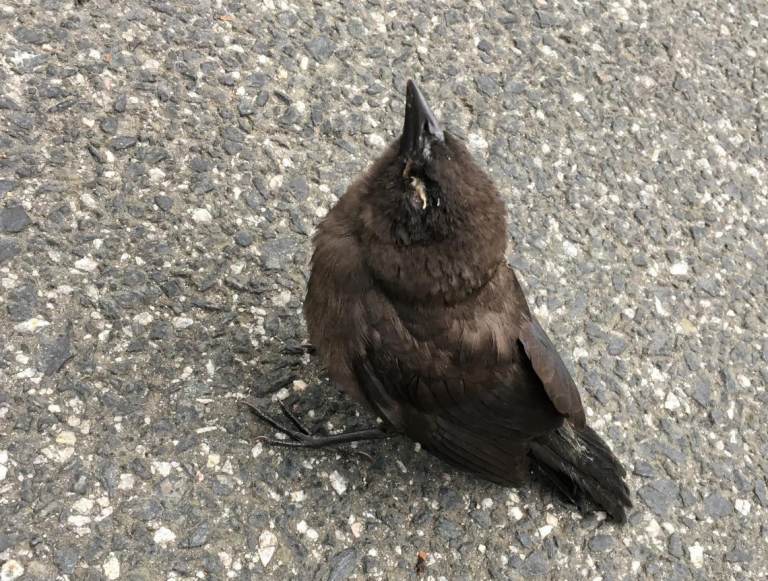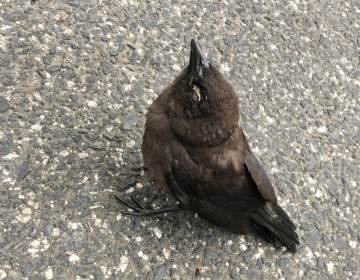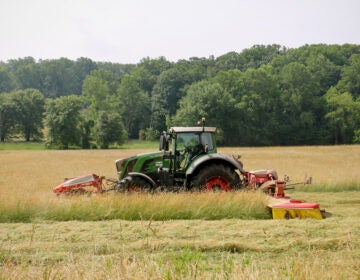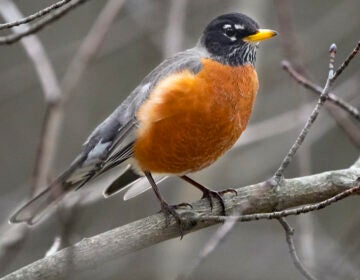Ban on bird-feeding lifted after mysterious disease abates
The advisory imposed earlier this summer sought to protect songbirds from an unknown ailment. It’s still not clear what was causing the bird deaths.

This bird was found in the Washington, D.C. metro region with swollen eyes and crusty discharge, a sign observed on most birds affected by a mysterious ailment in the region. (courtesy Leslie Frattaroli/NPS)
Bird feeders and birdbaths are once again welcome in Delaware backyards as a mysterious illness that had been killing songbirds appears to be on the decline.
In June, Delaware, New Jersey, and Pennsylvania were among more than 10 states where dead songbirds were found after exhibiting similar symptoms.
Wildlife officials in Delaware reported seeing birds with neurological symptoms that caused erratic flight, along with other signs of disease, including eye crusting and swelling that caused blindness in some songbirds. Affected birds included blue jays, European starlings, common grackles, and American robins.
It’s not clear what illness caused the disease, but in an effort to prevent it from spreading, officials in Delaware and elsewhere advised residents to take down bird feeders, birdbaths, and other features on their properties that would draw birds together in groups. It was sort of like social distancing for birds.
Now, nearly two months after issuing that order, Delaware’s Department of Natural Resources and Environmental Control (DNREC) has announced that the mysterious die-off appears to be lessening. The Pennsylvania Game Commission lifted its recommendation against feeding birds on Aug. 13.
Wildlife officials say it’s OK to rehang that bird feeder and fill the birdbath with water once again.
Pennsylvania Game Commission wildlife veterinarian Andrew Di Salvo said that the bird disease appears to be waning on its own, and that the public response shows how wildlife agencies rely on the community.
“The public plays a vital role in wildlife health surveillance,” said Di Salvo. “They are often the first to notice and report injured, sick, or dead wildlife. All those extra sets of eyes and ears enables us to respond as quickly as possible and resolve or investigate the situation. We certainly appreciate their vigilance and look forward to continuing to work closely with them into the future.”
As an added precaution, wildlife officials offer the following tips for backyard birders:
- Initially, thoroughly clean bird feeders and baths with a solution made up of 10% bleach and 90% water. That cleaning should be done weekly.
- Remove bird feeders and baths if sick or dead birds are observed.
- Avoid handling wild birds. Wear disposable gloves if it is necessary to handle a bird.
- Keep pets away from sick and dead wild birds.
Researchers are still trying to figure out what caused the birds to die. They have ruled out a number of things, including salmonella, chlamydia, avian influenza, and West Nile virus. There have been no human health issues reported in connection with the dead birds.
DNREC also said neither livestock nor poultry has been affected.
WHYY is your source for fact-based, in-depth journalism and information. As a nonprofit organization, we rely on financial support from readers like you. Please give today.







